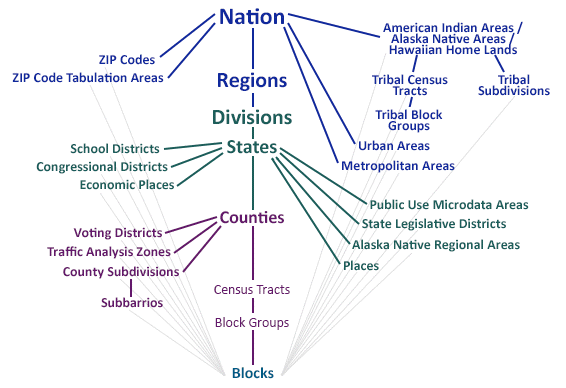Geodemographic Classification for Wireless Networks:
Identify Your Customer, Find Your Market, & Deploy Your Network
Geodemographic classification has traditionally been used for business, social research and public policy with the most common use case for targeted marketing. Customer segmentation is a deceptively simple-sounding concept, broadly speaking, the goal is to divide customers into groups that share certain characteristics. There are an almost-infinite number of characteristics upon which you could divide customers, however, the optimal number of characteristics and clusters vary as does the analytical approach depending upon the business objective. Rather than acquiring customer segmentation data from a commercial source or third party, it is much more valuable to create your own segmentation based on your specific business needs.
One of our customers, a fixed wireless ISP approached us to identify target markets which would align with their business model. Today LTE is the most widely used technology to provide fixed wireless broadband service in areas where fixed broadband infrastructure is poor. However, 5G fixed wireless broadband access has the potential to provide significantly better-quality service to consumers in the near future.
The ISP wanted to target neighborhoods based on competition, available speeds, income, and a variety of environmental factors including building height and household density. We use geodemographics to explore the dynamic and diverse spatial landscape of broadband availability in the United States at the block group level. The data shown in this article covers a different city, uses case, and a limited dataset to anonymize our client.
In this case, we explore localized socioeconomic and demographic data relative to broadband availability through the use of a nationwide geodemographic classification system. In our analysis, we find broadband availability and adoption is not simply a question of geography such as urban vs rural. Instead, it requires the inclusion of demand conditions such as age of the population, household size, income and supply conditions including geographical remoteness, subscriber density, access to backhaul, and level of competition.
For our analysis, we use a combination of public and proprietary datasets consisting of several hundred features to capture the geographic aspects of broadband availability, access to fiber, building height, LTE availability, and household density. We then layer in socio-demographic variables including age, income, education, and household device ownership to create a market profile. As an example, we show a summary of 7 clusters representing the broadband market in Atlanta. (shown below)
The y-axis of the image above shows the 7 clusters in Atlanta with a selection of more than 30 variables along the x-axis. The colors represent the scaling of each variable across the 7 clusters. Dark red represents high values while purple and blue represent the lowest values. The absolute or percentage values can be seen in the estimate field using the hover effect.
In Atlanta, Comcast operates a 40,000-mile network, making it the area’s largest provider of gigabit-speed internet service in the region covering ~70% of Atlanta with gigabit internet speeds, while AT&T covers an estimated 25% of the market with gigabit speeds. The first challenge facing a new FWA entrant is to assess the environmental and supply factors for broadband.
We use the approach above to identify market segments that might be ideal for a fixed wireless ISP competing on price with a target speed of 25Mbps. We observe clusters 1 and 5 which have substantially lower broadband penetration than their peers. In both clusters, almost half the consumers have opted to have no home internet or rely solely on their Smartphone for connectivity. While most of the block groups in these clusters have access to at least two providers, only one ISP typically offers a high speed.
A look at the demographic and demand characteristics shows both clusters are primarily suburban with similar income profiles. However, cluster 5 has 2.5x the household density (households per sq km) of cluster 1. We use building characteristics to identify subsets of markets that might better be suited for our technology use case. Cluster 1 is comprised of a mix of single-story family homes and low rise multi-family structures while cluster 5 is a mix of low and mid-rise multi-family structures. The demographic and demand characteristics show cluster 5 is younger and twice as likely to have kids and has while cluster 1 who tends to be older and twice as likely to live alone.
Companies that identify underserved segments can routinely outperform the competition by offering appealing products and services with a distinct competitive advantage. This process of prioritization can help companies develop marketing campaigns, product offerings, and pricing strategies to maximize profits. Customer segmentation and geodemographics provide a powerful analytical framework for allocating resources and answering important questions like:
Who and where are our most valuable customers?
Where do we place our sites?
How do we increase the average revenue per user (ARPU)?
Whom should we target for the next promotion?
How do we find the ideal bundle of products?
How do we enhance customer loyalty?

